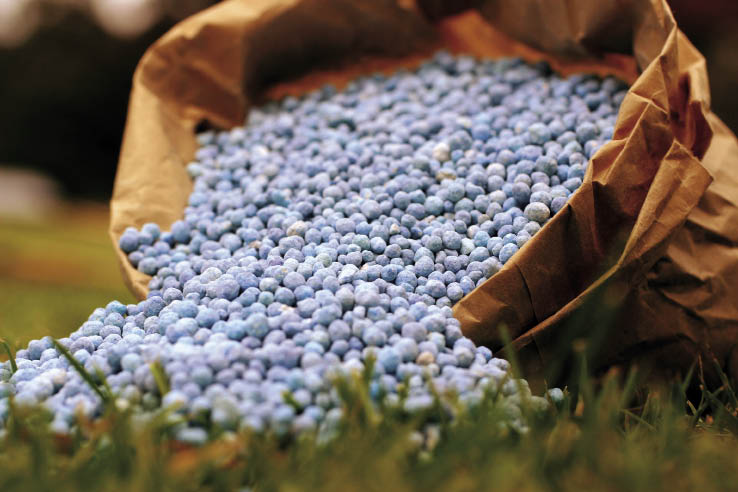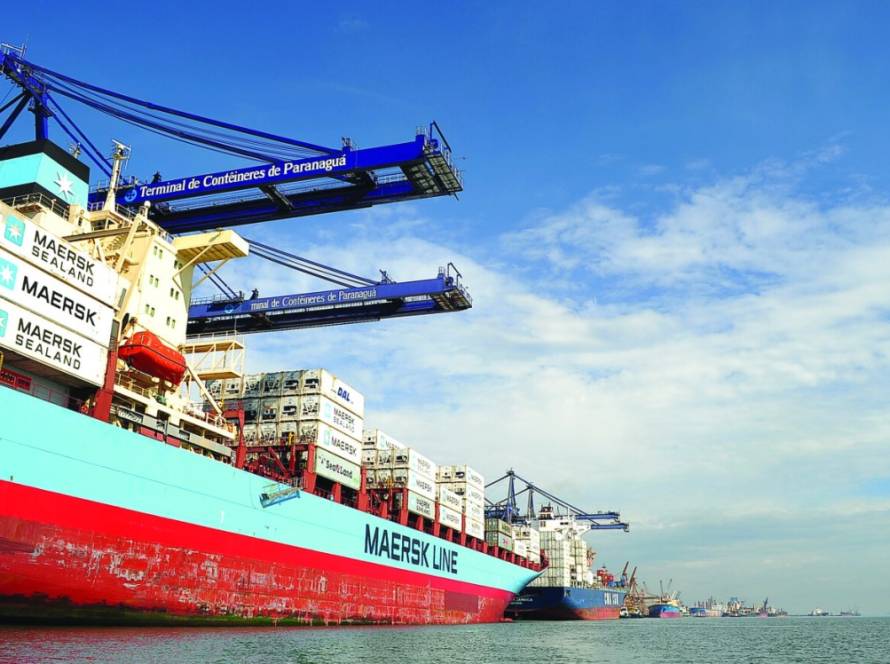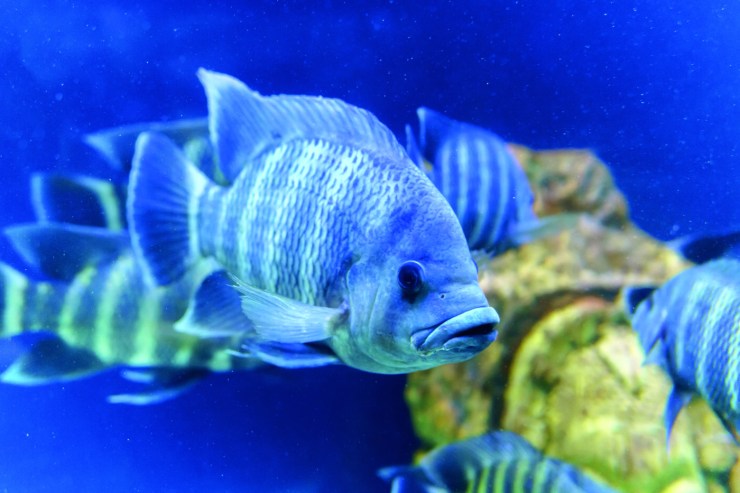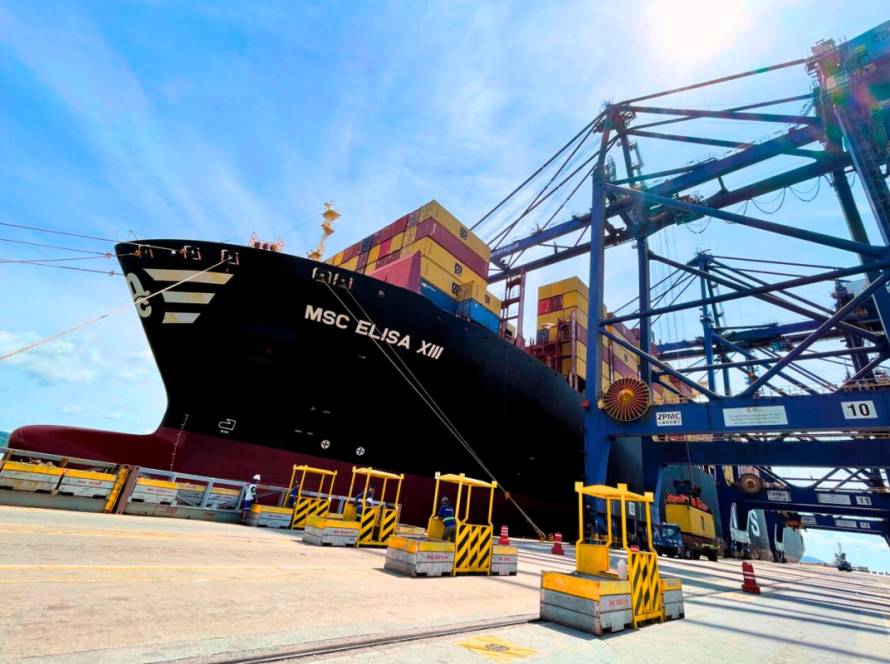Just days before the United States begins applying 50% tariffs on all Brazilian products, effective August 1st, Paraná's agribusinesses and rural sector are expecting a major disruption to their operations. This is because several agribusiness sectors are on the list of products on Paraná's export agenda to the United States. Forestry products, in which Paraná stands out nationally, coffee, fish farming, beef, and oranges are expected to be the most impacted.
In 2024, the United States was Paraná's second-largest trading partner, importing the equivalent of US$1.58 billion in agricultural products. In the first two months of this year, the United States ranked as the third-largest destination for Paraná's exports, totaling US$1.54 billion. In other words, the market commanded by President Trump is not merely an occasional occurrence, but a fundamental pillar of the state's trade strategy. "The FAEP System is aware of the potential consequences of this measure. We are just days away from the start of the tariff hike, but the federal government has never opened a negotiation channel, seeking to preserve our trade agreements and minimize the impact on those who work in the fields. This is concerning," notes Ágide Eduardo Meneguette, acting president of the FAEP System.
Since 2009, the US has had a trade surplus with Brazil.

Fish farming
Fish farming, especially tilapia production, a segment in which Paraná stands out nationally and internationally, will be one of the sectors most affected by the tariff hike. This is because the main destination for Paraná's fish is the United States.
In 2024, the United States was the destination for 89% of Brazilian fish farming exports, totaling US$$ 52.3 million. In Paraná, between 2023 and 2024, exports grew by 94% in value and 68% in volume. The state was the largest Brazilian exporter of tilapia in 2024, generating revenue of US$$ 35.7 million, representing a share of 64% of the national total.
The State is responsible for 36% of the national tilapia production and 25% of all fish production in the country. Despite being in

Photos: Disclosure/OPR Archive
Despite its growth, this economic chain is still quite incipient and will be more severely impacted. "Unlike the poultry, pork, and grain chains, tilapia is still developing. It's an activity with a strong presence in family farming and is highly indebted, seeking funding from financial institutions to adapt its properties to health, technical, and labor requirements," emphasizes Edmilson Zabott, president of the FAEP System's Aquaculture Technical Committee, who is also president of the Rural Union of Palotina, in western Paraná. The region, where cooperatives are heavily involved, accounts for 85% of the state's production, with 180,000 tons of fish annually.
According to Zabott, one of Paraná's most important tilapia export cooperatives has already announced a 15-ton reduction in daily harvested fish. "The United States is our largest foreign buyer, with 801 metric tons of Paraná tilapia exported there. Therefore, the consequences of this tariff increase will be enormous," he assesses.
Domestically, the imposition of US tariffs halts a period of expansion. Brazilian fish farming exports grew by 1,381 TP4T in value in 2024, reaching 1,105 TP4T. In volume, the growth was 1,021 TP4T. "There has been no growth in export volume since 2021, only an increase in value," highlights Fábio Mezzadri, a technician at the FAEP System's DTE.
Beef
In the case of beef, the expectation is that the US decision will not have any direct impacts. There is only one plant in Paraná, located in the Northwest region, which exports to this destination. "Paraná may be affected by some side effects. But it wouldn't have a significant impact on its industries," assesses Ângelo Setim Neto, executive president of the Meat and Meat Products Industry Union of the State of Paraná (Sindicarnes). "There has been no halt in slaughtering in the state. Our market continues to exist and absorb production," he adds.
located in the Northwest region, which exports to this destination. "Paraná may be affected by some side effects. But it wouldn't have a significant impact on its industries," assesses Ângelo Setim Neto, executive president of the Meat and Meat Products Industry Union of the State of Paraná (Sindicarnes). "There has been no halt in slaughtering in the state. Our market continues to exist and absorb production," he adds.
Despite this, the tariff hike could interrupt a virtuous process for Paraná's exports. Comparing the first half of 2024 to the same period in 2025, the share of Paraná beef in shipments to the US increased by 180% in value, rising from US$1.6 million to US$$.
Other beef products also impact slaughter numbers. Leather, leather products, and fur (products made from animal skins) are also among the main exports from Paraná to the US. In the first half of this year, export revenue from these items was US$15,000,000. "Leather was significantly affected. This will be reflected in beef. The meatpacking industry's revenue from beef purchases is influenced not only by meat, but also by leather and other products," Setim analyzes.
Forest products
With a strong dependence on the North American market, Paraná's forestry sector will be the most impacted by the tariff imposed by the United States. The state is already feeling the effects of the measure, with canceled contracts, suspended shipments, containers held at ports, forced collective vacations, and layoffs in related industries. Furthermore, companies have reduced their operations to review strategies, with the imminent risk of unit closures.
According to the Paraná Association of Forest-Based Companies (APRE), the new tariff is unexpected and disproportionate, compromising the sector's competitiveness and directly affecting the income of small and medium-sized municipalities in Paraná. "This tax practically makes business unviable, and as a result, thousands of jobs and families are at risk," stated the organization's president, Fabio Brun, in a statement.
 According to Apre, the forestry sector employs approximately 400,000 people in Paraná, spanning from the production base to the processing industries. In 2024 alone, Paraná sold over US$1,500,000 in forest products to the United States, of which US$1,500,000 was timber—representing approximately US$1,000,000 of Brazil's total trade. The state stands out particularly for exports of plywood, lumber, and pine moldings, widely used in North American construction, as well as wooden doors, panels, and furniture.
According to Apre, the forestry sector employs approximately 400,000 people in Paraná, spanning from the production base to the processing industries. In 2024 alone, Paraná sold over US$1,500,000 in forest products to the United States, of which US$1,500,000 was timber—representing approximately US$1,000,000 of Brazil's total trade. The state stands out particularly for exports of plywood, lumber, and pine moldings, widely used in North American construction, as well as wooden doors, panels, and furniture.
In the case of wood frames, Paraná accounts for nearly 70% of Brazilian exports, with almost all of this volume (98.4%) destined for the United States. As for pine plywood, the state accounts for approximately 68% of national exports, and the US once again appears as the main buyer, accounting for 31.7% of the total. With Trump's surcharge, the competitiveness of these products in the international market will be drastically compromised.

To date, three Paraná-based industries have announced measures that directly affect workers. One thing they all have in common is that the North American market is their main export destination.
BrasPine, which is heavily involved in the production of frames for export, granted collective vacations to 1,500 employees, equivalent to 60% of the total workforce. The measure affects the Jaguariaíva and Telêmaco Borba units, in the Campos Gerais region. According to the company, after the tax was announced, "a significant number of orders" were suspended or postponed.
equivalent to 60% of the total workforce. The measure affects the Jaguariaíva and Telêmaco Borba units, in the Campos Gerais region. According to the company, after the tax was announced, "a significant number of orders" were suspended or postponed.
At Millpar, in Guarapuava, the second-largest company in the sector in Brazil and third in Latin America, 640 employees involved in the manufacture of exported products were included in the collective furloughs, representing 58% of the total. Furthermore, there was a reduction in operations to adjust production to the new temporary dynamics of the international market. Another industry giant, Sudati, announced the layoff of 100 employees at its Ventania and Telêmaco Borba units due to the uncertainty generated by the 50% tariff. Both affected units produce plywood.
Currently, redirecting Paraná's forestry production to other markets is not a viable option in the short or medium term. The sector is tied to the consumption profile of the United States, where Brazilian timber is used in both furniture and energy generation.

The application of the tariff is likely to have an immediate side effect: an overload on the domestic market, which cannot absorb this volume of production, especially in Paraná. "The timber produced here rarely has any other outlet. The state is even more vulnerable because much of this production cannot find a market in the domestic market," says Anderson Sartorelli, a technician with the Technical and Economic Department (DTE) of the FAEP System.
Coffee
North Americans are the world's largest coffee consumers and today depend on Brazilian beans to meet the high demand for the beverage. Brazil is the country's main supplier, accounting for 34% of the volume imported by the United States. The potential absence of Brazilian coffee would jeopardize the viability of the North American supply chain, further putting pressure on consumer prices.
Colombia, the second-largest producer of Arabica—the United States' preferred variety—lacks the capacity to fill the gap left by Brazil. On the other hand, Brazilian and Paraná exporters would seek new markets to mitigate the impacts, with a focus on Asia and Latin America.

Although it represents a small share of total coffee exports, Paraná has been gaining ground with instant coffee, a product with higher added value whose main market is the United States.
In addition to commodity coffee, the US is also the main destination for Brazilian specialty coffees, which accounted for 22% of exports in 2024. Paraná, which has excelled in this type of production, will be affected by the ripple effect, impacting remuneration and discouraging local producers. "It's a historical coffee purchasing relationship. The North American consumer is unlikely to stop consuming, even with price increases, which would sustain the value added of the production chain. The expectation is that the market will settle. But there will be an impact: the exporter will receive less, the producer will receive less, and the end consumer will pay more," assesses Jefrey Albers, DTE manager at Sistema Faep.
Orange juice
Although the European Union leads Brazilian orange juice imports (51.4%), the United States ranks second on this list. The United States is the destination for 41.7% of Brazil's exports in the last 12 months, according to data from CitrusBR. Given this scenario, the tariff hike poses a direct threat to the global supply structure, with repercussions for Paraná.

Photo: Disclosure/Freepik
According to the Foreign Trade Secretariat (Secex) of the Ministry of Development, Industry, Commerce and Services (MDIC), Paraná's orange juice exports increased by 345% in the first half of 2025, compared to the same period of the previous year, reaching US$ 4.76 million.
The municipality of Paranavaí, in the northwest of the state, is one of the most impacted regions, as the region is a major producer and exporter of orange juice, primarily to the United States. "We don't know how the tariff will be implemented or what the calculation criteria will be. We're also waiting to see how North American companies will react," says businessman Paulo Pratinha.
Currently, Brazilian juice already pays a tariff of US$1,415 per ton, representing between US$1,510 and US$2010 of the final price. If the new tax is added to this amount, the taxes could reach up to US$7010 of the export value. Even if US consumers accept paying more, the exporter will receive less, as will the rural producer. "There will be a need to accommodate this tariff, regardless of the percentage, among the links in the chain, given the dependence on US imports," he adds.
According to the businessman, the US's dependence on orange juice is high, especially on Brazil and Mexico – which is also on the surtax list, with a tariff of 30%. However, Mexican production has been suffering a decline due to health issues, which is likely to further increase the US's dependence on Brazilian products. "With the two main suppliers subject to surtaxes, the Americans have no viable alternatives. Their dependence on them is significant, and this will affect not only the consumer but also the entire industrial chain that adds value to our product there," the businessman observes.





